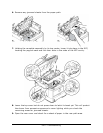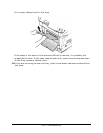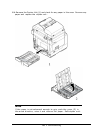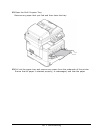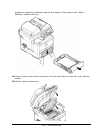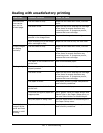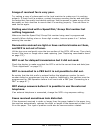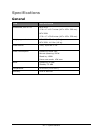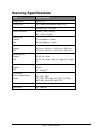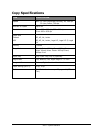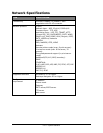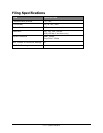
166
•
Troubleshooting
Image of received fax is very poor.
Try making a copy of a document on the local machine to make sure it is working
properly. If there is still a problem, contact the person sending the fax and ask them
to change their fax quality and density settings. Ask the person to make a copy of the
document on their machine to ensure that it is working properly. Then ask them to
send the fax again.
Dialling was tried with a Speed Dial/ Group Dial number but
nothing happened.
Make sure that the Speed Dial/ Group Dial number being used is programmed
correctly.When dialling a two or three digit number, be sure press # or * before
entering the number.
Documents received are light or have vertical streaks on them,
and MFP is not out of toner.
Lift the top cover and gently wipe the lens surface of the MFP’s LED array. Then check
to see if the toner or image drum need replacing (see “Replacing consumable items”
on page 137).
MFP is set for delayed transmission but it did not send.
Check the display to make sure that the MFP is set to the correct time and date (see
“Clock Adjustment” on page 57).
MFP is connected to a PBX but it is not possible to dial out.
Be certain that the dial prefix is entered before the telephone number for each
number dialled or programmed into the machine. Additionally, the machine must be
programmed for PBX operation before it will work with a PBX (see “Connecting to a
PBX” on page 67 ).
MFP always answers before it is possible to use the external
telephone.
If an external telephone is connected, change the MFP’s ring response setting.
Faxes received sometimes look distorted.
If the document received is wider or longer than the paper loaded in the paper tray,
the machine automatically reduces the width or length of the document so that it will
fit on the paper. This type of problem could also be communication related.



